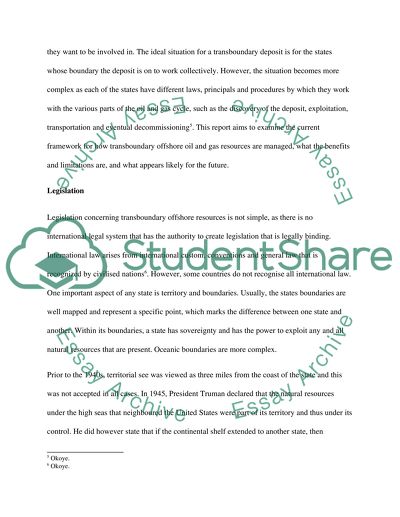Cite this document
(“Framework for the Development of Transboundary Offshore Oil and Gas Essay”, n.d.)
Retrieved from https://studentshare.org/law/1394391-framework-for-the-development-of-transboundary-offshore-oil-and-gas-resources-in-neighbouring-states
Retrieved from https://studentshare.org/law/1394391-framework-for-the-development-of-transboundary-offshore-oil-and-gas-resources-in-neighbouring-states
(Framework for the Development of Transboundary Offshore Oil and Gas Essay)
https://studentshare.org/law/1394391-framework-for-the-development-of-transboundary-offshore-oil-and-gas-resources-in-neighbouring-states.
https://studentshare.org/law/1394391-framework-for-the-development-of-transboundary-offshore-oil-and-gas-resources-in-neighbouring-states.
“Framework for the Development of Transboundary Offshore Oil and Gas Essay”, n.d. https://studentshare.org/law/1394391-framework-for-the-development-of-transboundary-offshore-oil-and-gas-resources-in-neighbouring-states.


